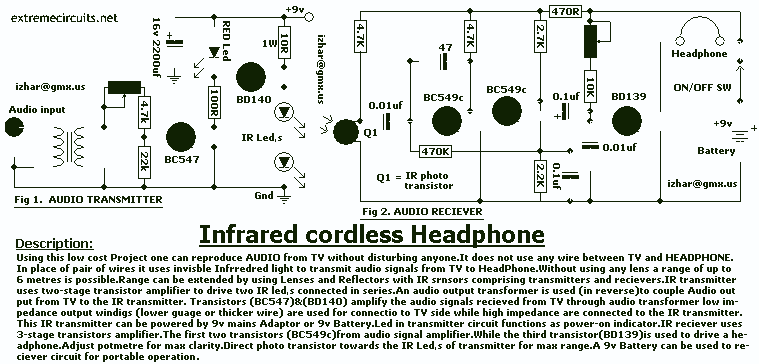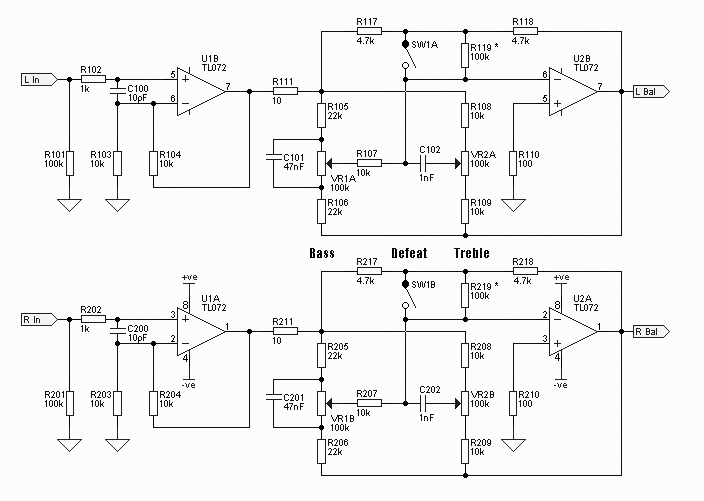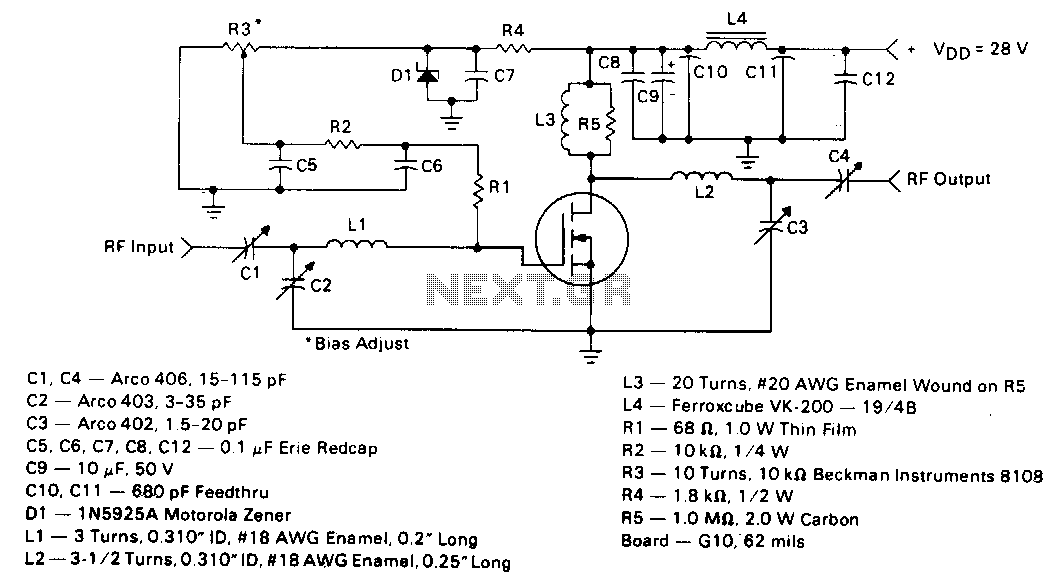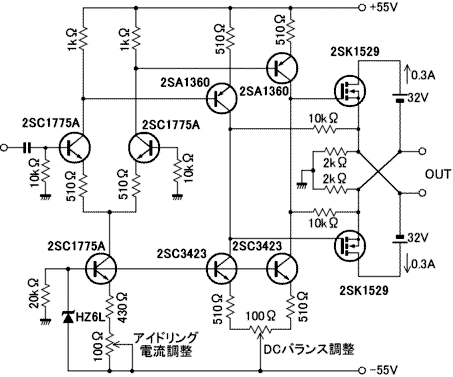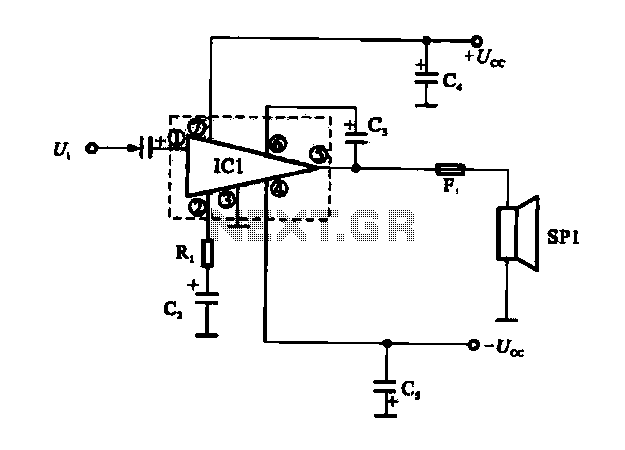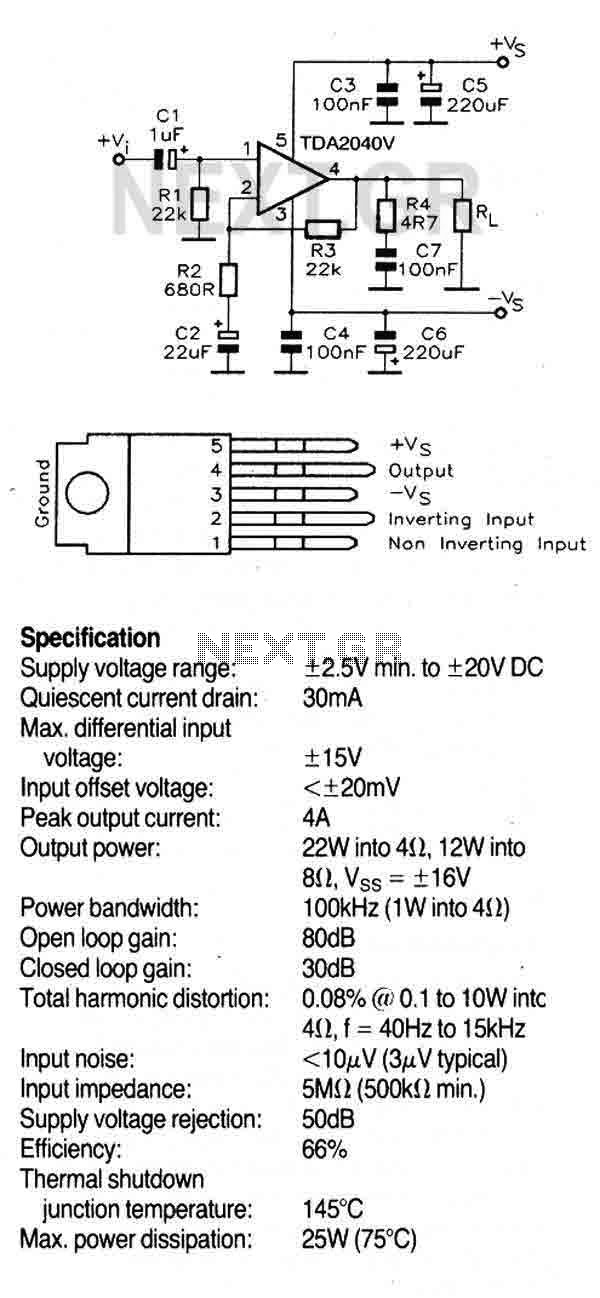
Dynaco ST-70 Amplifier
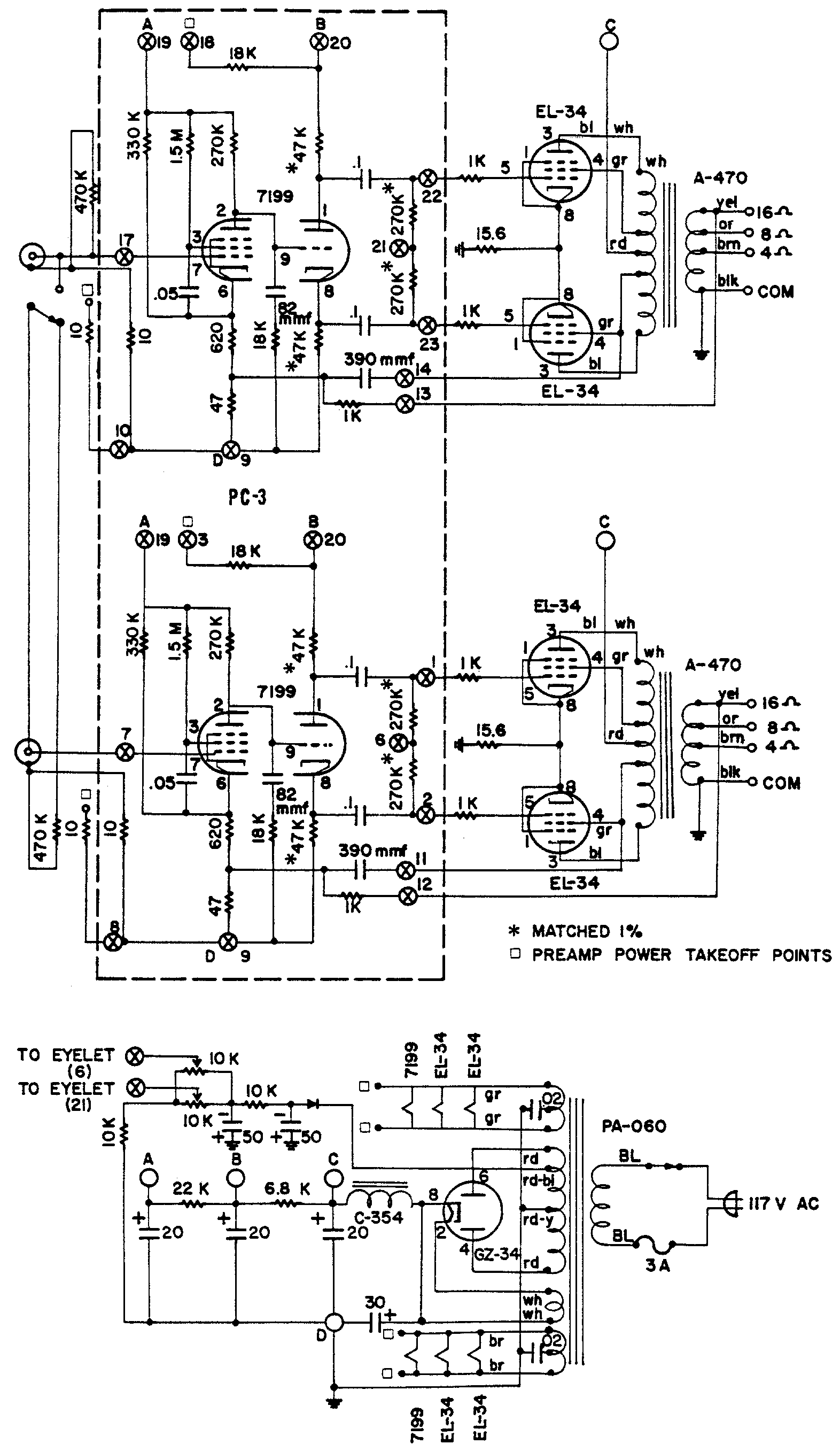
This classic tube amplifier was once considered the best value available. Fifteen years ago, it could be purchased for $25. The amplifier was designed to be affordable while maximizing performance for the cost. At the end of its production, it was sold as a kit for approximately $100. David Hafler, the designer, implemented cost-saving compromises effectively. For instance, the power supply is underwhelming by today’s standards, but the output tubes are biased into Class A, resulting in relatively constant current demands on the power supply, regardless of the program material. The input section is straightforward, featuring an input pentode followed by a direct-coupled split-load inverter based on a triode. This topology was popular during its time and utilized the 7199 tube. An outer feedback loop encompasses the output transformer and input pentode, while a secondary feedback loop is derived from the ultra-linear screen tap. Despite these feedback loops, the amplifier remains very stable. Measurements and listening tests indicate that the output transformers of the Dyna ST-70 are of high quality, at least in the units tested. Numerous modifications are available for this amplifier, which typically fall into two categories. The first involves total modifications, where almost everything in the amp is replaced except for the transformer, leading to a complete rebuild. While this approach is valid, it is important to consider that this is a budget amplifier, and the chassis may not be optimal. Investing significantly in a tube amplifier may warrant starting with a new chassis and designing from scratch rather than compromising to fit modifications into the existing chassis. The second modification category focuses on replacing the input board, which contains the difficult-to-find 7199 tubes. Although this can be a viable option, significant changes to the topology may compromise the amplifier's stability. Altering the original design in one aspect may reveal compromises in others. For example, reducing the bias current on the output tubes to extend their lifespan can lead to increased modulation of the power supply with the musical signal, resulting in high intermodulation distortion (IMD). Based on experience with various ST-70 modifications, the most satisfying changes tend to be those that alter the amplifier the least. These modifications typically retain the pentode voltage amplifier followed by a triode split-load inverter. A popular change is swapping the 7199 tube for a 6GN8 TV tube, which requires socket repinning. However, triode/pentode tubes generally do not perform as well, likely because only the 7199 was specifically designed for audio applications. An alternative method involves using a third tube, incorporating two pentodes and a dual triode, allowing the use of readily available, high-quality tubes. A replacement capacitor board has been designed for the ST-70, which replaces the large can capacitor in the power supply section. Finding exact replacements for the original can capacitors is challenging. While various capacitors can be used to achieve the required values, installing them can clutter the amplifier. This circuit board accommodates readily available circuit board-mounted capacitors, offering a wide range of values and voltages. It can hold similar capacitor values to the original can capacitors with ample additional space. Capacitor values can be significantly increased while still fitting on the board and within the amplifier. Additionally, the total cost of the required capacitors is comparable to that of a single modern twist-lock capacitor.
The Dyna ST-70 tube amplifier is a well-regarded design known for its effective balance between cost and performance. It features a straightforward circuit topology that includes an input pentode and a triode inverter, which work together to amplify audio signals effectively. The use of feedback loops enhances stability and linearity, contributing to the amplifier's overall sound quality. The design allows for various modifications, catering to enthusiasts who wish to customize their amplifiers while maintaining the integrity of the original sound. The replacement capacitor board is a notable enhancement, allowing for easier maintenance and improved performance by utilizing modern components. This adaptability and the potential for upgrades have contributed to the enduring popularity of the Dyna ST-70 in the audio community.This classic tube amplifier used to be the best value on the block. Fifteen years ago you could buy one of these for $25. This amp was designed to be inexpensive and to get maximum performance for dollar paid. At the end of it`s sale it sold for about $100 in kit form. David Hafler, the amp designer, made the cost containing compromises in a very clever way. For example, the power supply is wimpy by modern standards, but he biased the output tubes into Class A, so the current demands on the power supply are fairly constant regardless of program material. The input section is very simple; an input pentode, followed by a direct coupled split load inverter based on a triode.
This topology was very popular at the time, and used the 7199 tube. There is an outer feedback loop that encloses the output transformer and input pentode. There is also a secondary feedback loop that is taken from the ultra-linear screen tap. Even with these two feedback loops, this amplifier very stable. From my measurements and listening tests, I believe that the Dyna ST-70 output transformers are of very good quality (at least the ones on my ST-70). There are many modifications available for this amp. There are two problems that most modifications fall into. First there are the total mods. Basically, everything in the amp is removed except the iron, and the amp is rebuilt. This is all well and good, but don`t forget that this is a budget amp, and the chassis is not so great either.
If you are going to dump that much money into a tube amp, why not start with a new chassis, and design it from the ground up instead of making compromises to fit the mod into this chassis. The second type of modification class is just to replace the input board which contains the hard to find 7199 tubes.
This can be a good way to go, but if the topology is changed significantly, the stability of the amp can be compromised. And if the original design is changed in one way, it can show the compromises in another area. For example, if the bias current is reduced on the output tubes to lengthen their lives, the power supply modulates more with the musical signal, and the IMD goes through the roof.
Based on my listening experience with various ST-70 mods. The most satisfying mods change the amp the least. These mods have kept the pentode voltage amp followed by a triode split load inverter. Changing the 7199 tube to a 6GN8 TV tube is popular, and requires socket repining. But triode/pentode tubes generally don`t sound all that good, I believe that is because only the 7199 was really designed for audio. The other method is to use a third tube, and use two pentodes and a dual triode. This method allows the use of readily available, good sounding tubes. I`ve designed a replacement capacitor board for the ST-70. This board replaces the large can capacitor in the power supply section of the Dynaco ST-70 amplifier.
Exact replacements for the original can capacitors are difficult to find. The values needed can be built up with various replacement caps, but the installation of all the needed capacitors tends to make the amplifier very messy. This circuit board uses readily available circuit board mounted capacitors. There is a large range of values and voltages available in this form factor. The board easily holds similar capacitor values to the original can caps with room to spare. The capacitor values can be increased substantially and still fit on the board and in the amplifier. As an added bonus, the cost of all the caps needed is almost the same as a single modern twist lock capacitor.
🔗 External reference
The Dyna ST-70 tube amplifier is a well-regarded design known for its effective balance between cost and performance. It features a straightforward circuit topology that includes an input pentode and a triode inverter, which work together to amplify audio signals effectively. The use of feedback loops enhances stability and linearity, contributing to the amplifier's overall sound quality. The design allows for various modifications, catering to enthusiasts who wish to customize their amplifiers while maintaining the integrity of the original sound. The replacement capacitor board is a notable enhancement, allowing for easier maintenance and improved performance by utilizing modern components. This adaptability and the potential for upgrades have contributed to the enduring popularity of the Dyna ST-70 in the audio community.This classic tube amplifier used to be the best value on the block. Fifteen years ago you could buy one of these for $25. This amp was designed to be inexpensive and to get maximum performance for dollar paid. At the end of it`s sale it sold for about $100 in kit form. David Hafler, the amp designer, made the cost containing compromises in a very clever way. For example, the power supply is wimpy by modern standards, but he biased the output tubes into Class A, so the current demands on the power supply are fairly constant regardless of program material. The input section is very simple; an input pentode, followed by a direct coupled split load inverter based on a triode.
This topology was very popular at the time, and used the 7199 tube. There is an outer feedback loop that encloses the output transformer and input pentode. There is also a secondary feedback loop that is taken from the ultra-linear screen tap. Even with these two feedback loops, this amplifier very stable. From my measurements and listening tests, I believe that the Dyna ST-70 output transformers are of very good quality (at least the ones on my ST-70). There are many modifications available for this amp. There are two problems that most modifications fall into. First there are the total mods. Basically, everything in the amp is removed except the iron, and the amp is rebuilt. This is all well and good, but don`t forget that this is a budget amp, and the chassis is not so great either.
If you are going to dump that much money into a tube amp, why not start with a new chassis, and design it from the ground up instead of making compromises to fit the mod into this chassis. The second type of modification class is just to replace the input board which contains the hard to find 7199 tubes.
This can be a good way to go, but if the topology is changed significantly, the stability of the amp can be compromised. And if the original design is changed in one way, it can show the compromises in another area. For example, if the bias current is reduced on the output tubes to lengthen their lives, the power supply modulates more with the musical signal, and the IMD goes through the roof.
Based on my listening experience with various ST-70 mods. The most satisfying mods change the amp the least. These mods have kept the pentode voltage amp followed by a triode split load inverter. Changing the 7199 tube to a 6GN8 TV tube is popular, and requires socket repining. But triode/pentode tubes generally don`t sound all that good, I believe that is because only the 7199 was really designed for audio. The other method is to use a third tube, and use two pentodes and a dual triode. This method allows the use of readily available, good sounding tubes. I`ve designed a replacement capacitor board for the ST-70. This board replaces the large can capacitor in the power supply section of the Dynaco ST-70 amplifier.
Exact replacements for the original can capacitors are difficult to find. The values needed can be built up with various replacement caps, but the installation of all the needed capacitors tends to make the amplifier very messy. This circuit board uses readily available circuit board mounted capacitors. There is a large range of values and voltages available in this form factor. The board easily holds similar capacitor values to the original can caps with room to spare. The capacitor values can be increased substantially and still fit on the board and in the amplifier. As an added bonus, the cost of all the caps needed is almost the same as a single modern twist lock capacitor.
🔗 External reference
